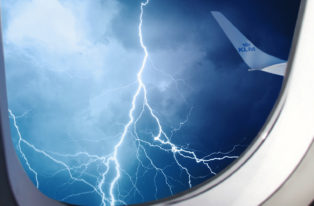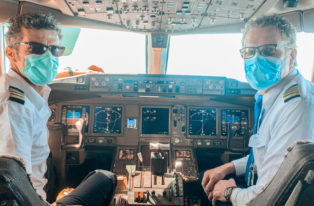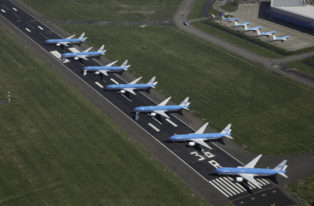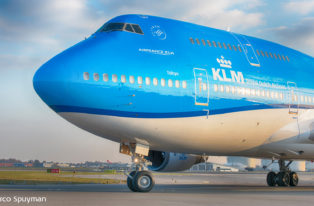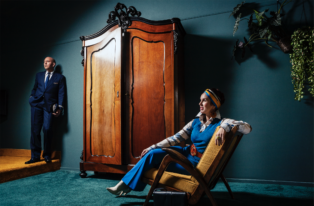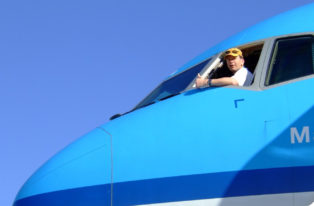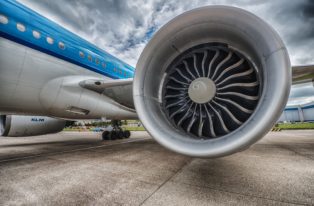The future of Virtual Reality on board
A quiet flight with thirty passengers to Barcelona – you might think. But we are no ordinary travellers and this is no average flight. As KLM staff from a variety of departments, we occupy the front rows of the flight simulator.
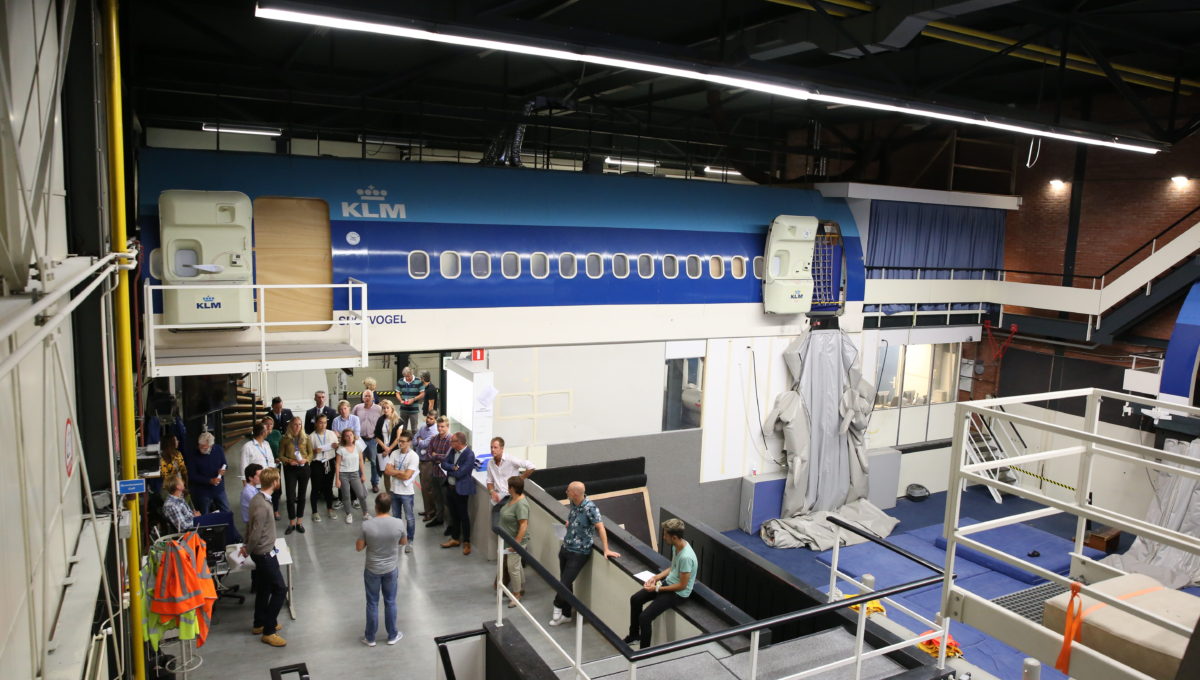
Photo owned by NLR.
We’re taking part in a preliminary KLM study into the behaviour of passengers wearing Virtual Reality (VR) headsets. Just imagine: while you, the passenger, are reading your information and watching games and movies in the virtual world, the cabin crew are serving meals or providing safety instructions. How do they go about reaching the passenger safely? How do you deal with turbulence? These are all subjects that we, the guinea pigs, have the honour of testing today.
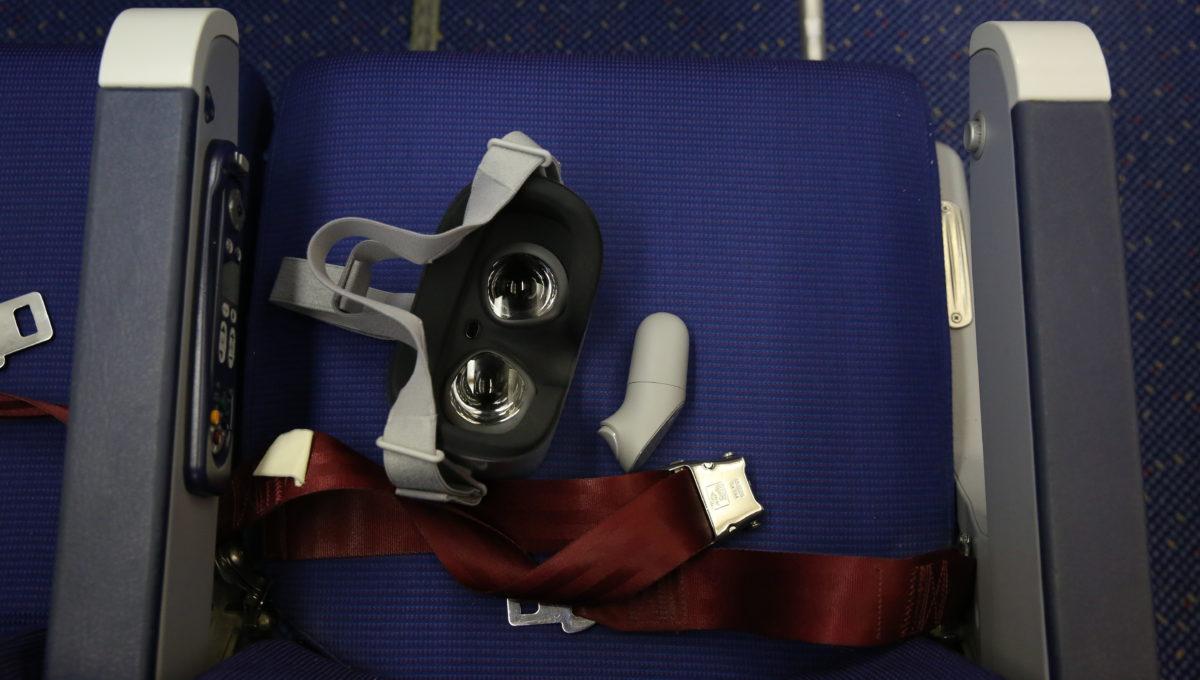
Photo owned by NLR.
It was fun to join our colleagues and play the part of passengers and have an influence on the future of VR on board. You get to explore the airport while you’re still on board.
The purser tells us to look for the Transfer Desk in Amsterdam using VR. We find it by using the pointer to puncture balls in a kind of game along the route. It’s all fun and useful. But there’s also a catch. When I have my headset on, I find I ignore the orders. I can hear the captain saying something about the weather and the destination far in the distance, but I’m completely caught up in my virtual surroundings.
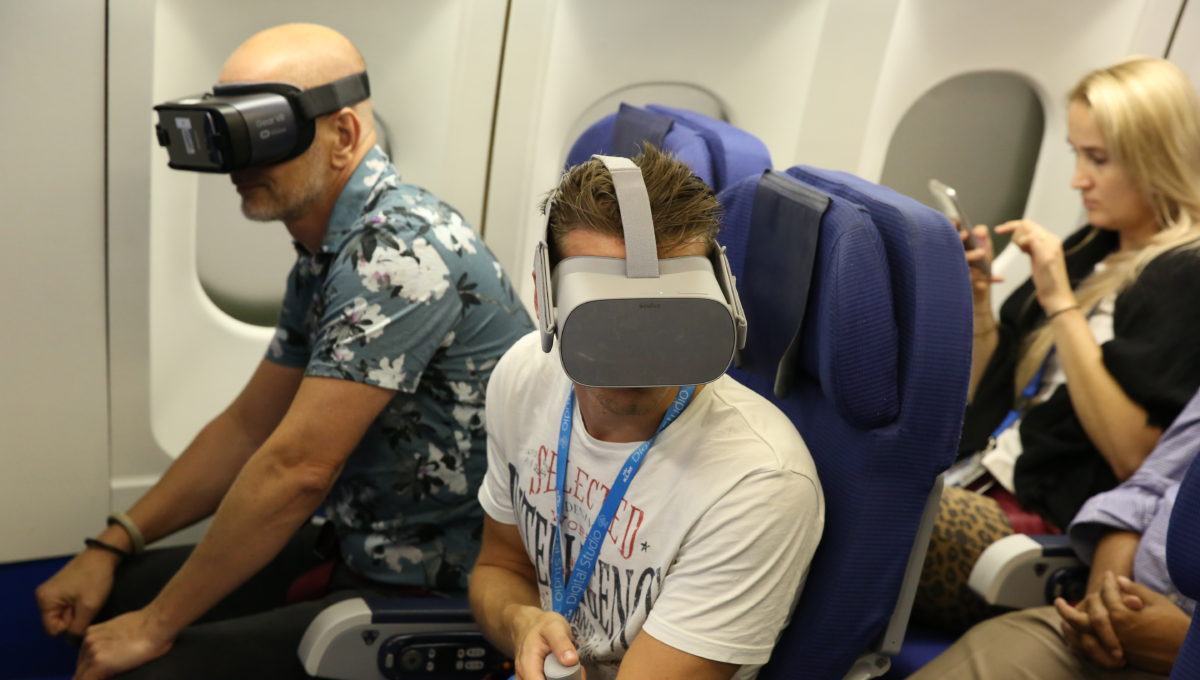
Photo owned by NLR.
And, all of a sudden, we’re hit by turbulence. Now I can’t even puncture the balls. I make a sharp turn to the right to reach a ball that’s too far away and I hit my neighbour’s hand in the process. Fortunately, it’s a simulation. During a real flight a sudden movement like that would be unsafe.
The cabin crew must have nerves of steel. It takes complete discipline on their part to keep those of us with VR glasses in line. We hardly even respond when they offer us our meals. Everyone is busy trying to find and click on the virtual balls. Social skills? Forget it!

Photo owned by NLR.
It’s very much the question if service on board using VR will live up to its promise. It’s going to look very different. And, as an organisation, you have to think about just what it is you want to communicate using VR. For instance, you can show what there is to do at Schiphol and I imagine it would be great to see the captain talking to me in the cockpit through my VR headset. And what about a virtual flight safety demonstration, not a film or a cabin crew demonstration, but finding the actual emergency exits in a virtual aircraft?
My stomach is grumbling. I’m longing to hear, “Dinner is served, take off your headsets.” There’s no meal, but pizzas are on the way.
At this early stage, it takes some getting used to for the cabin crew. But the possibilities are endless and, with the entertainment that VR can offer, the hours will fly by, as it were. That could come in handy on an intercontinental flight. I’m very curious to see the initial test results. We’ll know more by early September.
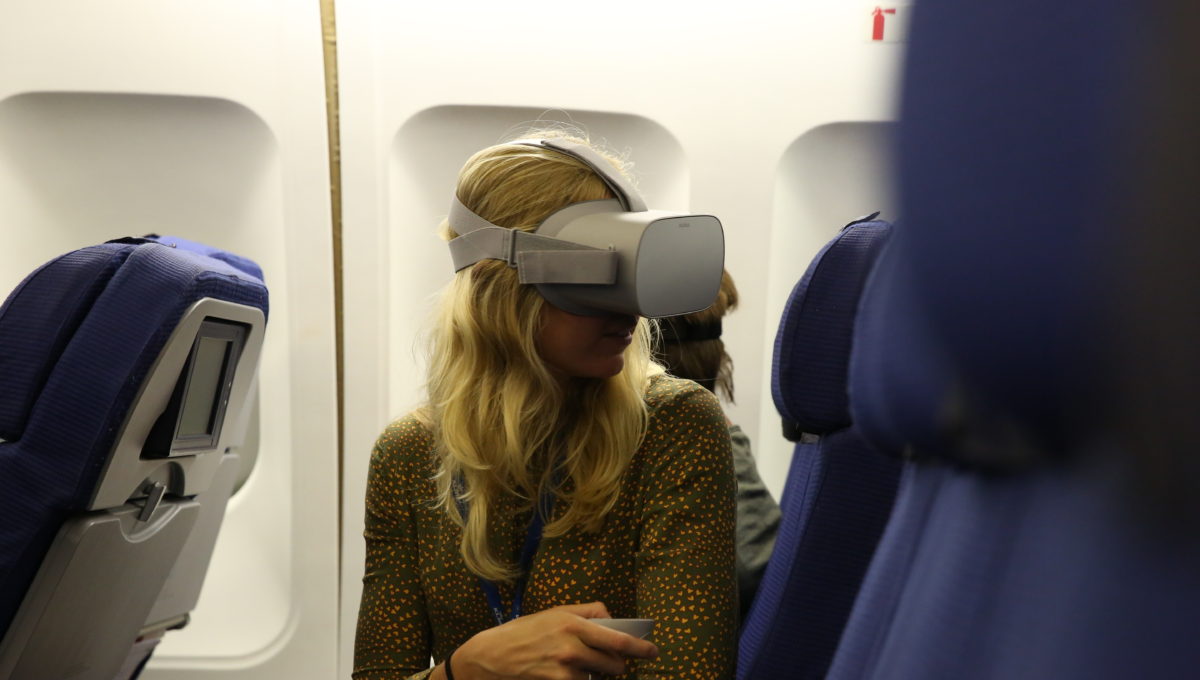
Photo owned by NLR.
Immersive Cabin Project
KLM’s study is all part of the Immersive Cabin Project (IMCA) which, in turn, is part of the Clean Sky 2 programme. In this way, the European Commission wants to create a level playing field for the European market. The results of this research on the effects of Virtual and Augmented Reality on board by KLM together with the NLR institute, will be used as a standard for the whole industry. As a leader in the airline industry, the research team can further assist other airlines and companies to develop similar applications. They will present their findings in late September.

